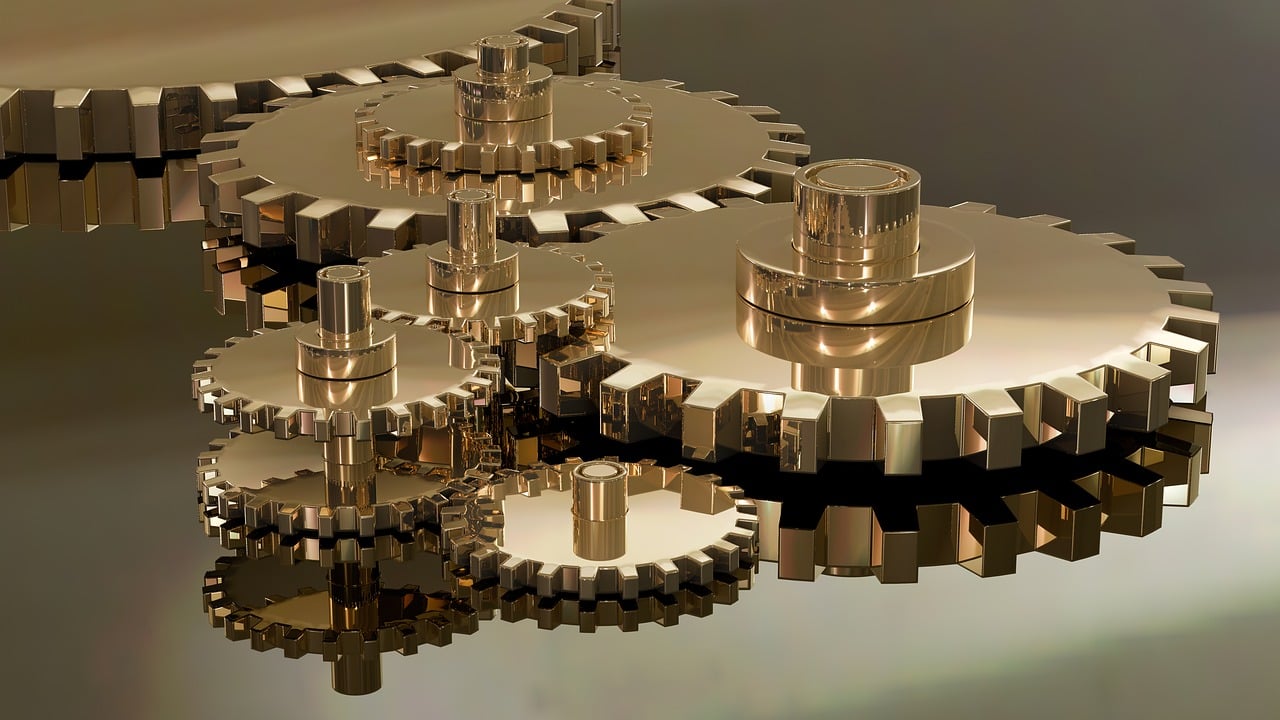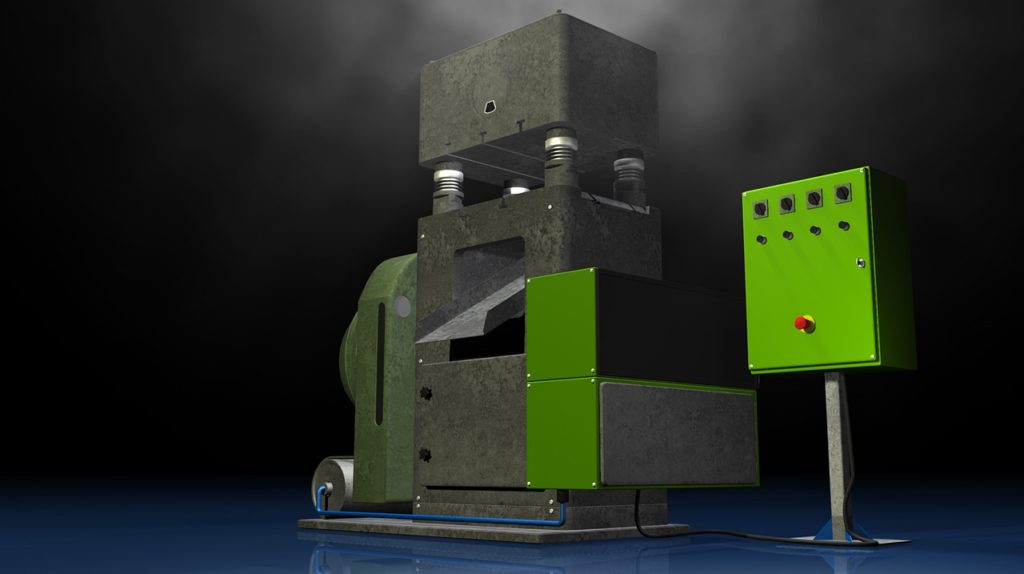In the realm of manufacturing, the choice of materials and production processes plays a pivotal role in determining the quality, durability, and performance of the end products. Hot forging is a method that has gained significant prominence, particularly in the production of machine parts. This article delves into the world of hot forged machine parts. We will explore the advantages that make them a preferred choice in various industrial applications.
Understanding Hot Forging:
Hot forging is a metalworking process where a metal billet is heated to a temperature above its recrystallization point. The billet is then deformed between dies to achieve the desired shape. This process enhances the mechanical properties of the material, making it stronger and more resilient. When it comes to manufacturing machine parts, hot forging has distinct advantages that set it apart from other methods.
Most common Hot forged Metals
The choice of metals is critical in determining the success of the hot forging process and the quality of the final product. This article delves into some of the common metals used in hot forging, highlighting their unique properties and applications.
Carbon Steel:
Carbon steel is one of the most common metals in the hot forging industry. This is due to its excellent combination of strength, affordability, and versatility. With varying carbon content, carbon steel can be ideal for specific applications. Common carbon steel grades for hot forging include 1045, 4140, and 4340, often employed in manufacturing components like gears, shafts, and connecting rods.
Alloy Steel:
Alloy steel, comprising elements such as chromium, molybdenum, and nickel, is good due to its excellent mechanical properties. Hot forging alloy steels results in components with improved hardness, wear resistance, and heat resistance. Alloy steels are commonly in the production of critical components for automotive, aerospace, and industrial machinery.
Stainless Steel:
Stainless steel, known for its corrosion resistance and durability, is common in hot forging processes for components requiring resistance to rust and corrosion. Grades like 316 and 17-4 PH are commonly hot forged to produce parts for applications in the chemical, food processing, and marine industries.
Titanium:
Titanium, valued for its high strength-to-weight ratio and corrosion resistance, is a popular choice in aerospace and medical applications. Hot forging titanium produces components like aircraft parts, surgical instruments, and prosthetics, where lightweight yet strong materials are crucial.
Aluminum Alloys:
Aluminum and its alloys are utilized in hot forging for their lightweight nature and excellent thermal conductivity. These forgings are commonly found in automotive components, aerospace structures, and consumer electronics. The hot forging process enhances the strength of aluminum, making it suitable for various applications.
Copper and its Alloys:
Copper and copper alloys, such as bronze and brass, are chosen for hot forging when electrical conductivity and corrosion resistance are essential. CU forged components find applications in electrical connectors, plumbing fixtures, and architectural elements.
Nickel Alloys:
Nickel alloys, known for their high-temperature resistance and corrosion resistance, are ideal for hot forging of components in aerospace, chemical processing, and power generation industries. Common nickel alloy grades include Inconel and Hastelloy, which exhibit excellent mechanical properties at elevated temperatures.
Advantages of Hot Forged Machine Parts:
Enhanced Strength and Durability:
Hot forging imparts superior strength enables them to withstand heavy loads, high temperatures, and harsh operating conditions. The grain structure of the metal is refined during the hot forging process. This contributes to increased durability and resistance to wear and tear.
Improved Metallurgical Properties:
The controlled heating and deformation in hot forging lead to improved metallurgical properties of the material. This includes a more uniform grain structure, reduced porosity, and enhanced resistance to fatigue. These factors collectively contribute to a longer lifespan of machine parts.
Precision and Consistency:
Hot forging allows for precise control over the shaping process, ensuring that the final product conforms to tight tolerances and specifications. Consistency in dimensions is crucial in machine parts, where even slight variations can impact the performance and compatibility of the components.
Cost-Efficiency:
While the initial setup costs for hot forging may be higher than some alternative methods, the long-term benefits often outweigh the initial investment. The extended lifespan of hot forged machine parts reduces the frequency of replacements and maintenance, leading to overall cost savings for industries.
Material Utilization:
Hot forging optimizes material utilization, minimizing waste during the production process. The efficiency of the method allows manufacturers to achieve a higher yield from raw materials, contributing to sustainability goals and reducing the environmental impact of manufacturing operations.
Versatility in Material Selection:
Hot forging is compatible with a wide range of materials, including various alloys and metals. This versatility enables manufacturers to tailor machine parts to specific applications, taking advantage of the unique properties of different materials to meet performance requirements.
Streamlined Production Process:
The hot forging process is inherently faster compared to some alternative methods, contributing to increased production efficiency. This is particularly beneficial in industries where timely delivery of machine parts is crucial to maintaining production schedules.
Application Of hot forged machine parts
Hot forged parts find applications across various industries due to their enhanced strength, durability, and precision. The manufacturing process of hot forging imparts unique characteristics to these components, making them well-suited for demanding applications. Here are some key applications of hot forging machine parts:
Automotive Industry:
Hot forged machine parts are extensively used in the automotive sector for critical components such as connecting rods, crankshafts, and gears. The enhanced strength and durability provided by hot forging contribute to the reliable performance of these parts in engines and drivetrain systems.
Aerospace Sector:
In aerospace applications, where lightweight yet robust components are essential, hot forged parts play a crucial role. Components like landing gear components, structural elements, and critical aircraft fasteners benefit from the improved metallurgical properties and precision achieved through hot forging.
Heavy Machinery and Equipment:
Industries involved in manufacturing heavy machinery, construction equipment, and agricultural machinery often rely on hot forged machine parts. This is due to their ability to withstand heavy loads and harsh operating conditions. Components like shafts, gears, and hydraulic components benefit from the strength imparted by hot forging.
Oil and Gas Sector:
Hot forged parts are in the oil and gas industry for critical components like valves, flanges, and pipeline fittings. The ability of hot forging to produce components with high strength and resistance to corrosion makes it suitable for the oil and gas sector.
Power Generation:
Components used in power generation facilities, such as turbines, generator shafts, and other critical parts, can benefit from the superior mechanical properties achieved through hot forging. The precision and consistency in dimensions contribute to the efficiency and reliability of power generation systems.
Railway Industry:
Hot forged machine parts play a vital role in the railway sector, particularly in the manufacturing of components like axles, couplings, and brake system parts. The ability of hot forging to produce components with excellent fatigue resistance is crucial for railway systems.
Mining Equipment:
Components used in mining equipment, such as gears, shafts, and drilling tools, benefit from the robustness provided by hot forging. These parts can withstand the demanding conditions encountered in mining operations, including heavy loads, abrasive materials, and challenging environments.
Medical Equipment:
Certain medical devices and equipment, especially those requiring high precision and strength, may incorporate hot forged machine parts. The consistent dimensions and enhanced mechanical properties make hot forging suitable for critical components in medical instruments.
In conclusion, hot forged machine parts have become integral to modern manufacturing processes thanks to their exceptional strength, durability, and precision. The advantages offered by hot forging make it a preferred method for industries ranging from automotive to aerospace, where the reliability and performance of machine components are of utmost importance. As technology continues to advance, hot forging is likely to play an even more significant role in shaping the future of industrial manufacturing. Visit China for quality and affordable hot forged parts.


